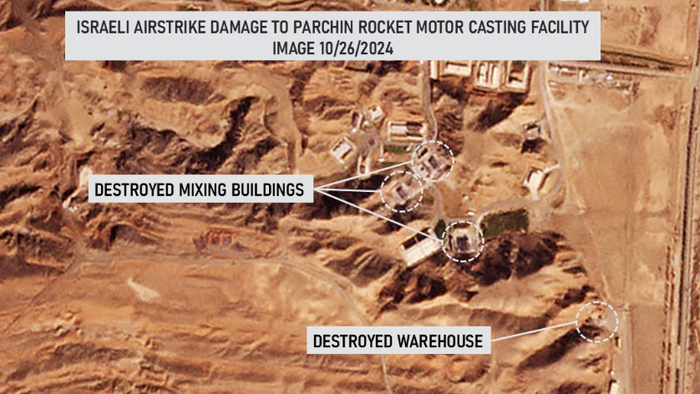On Friday evening, the Israel Defense Forces (IDF) launched a series of airstrikes against high-value military targets in Iran, marking a significant escalation in regional tensions. Describing the operation as retaliation for ongoing attacks by Iran’s Islamic Revolutionary Guard Corps (IRGC) aimed at Israel and its allies, IDF officials highlighted a systematic response to months of threats and hostile actions. The strikes targeted critical military infrastructure including a former nuclear weapons facility and missile production sites. Despite no videos or images being released by the IDF, analysis through geospatial intelligence (GEOINT) confirmed that significant installations such as the Parchin military base faced missile and bomb strikes, emphasizing Israel’s commitment to neutralizing perceived threats from Iran.
In the aftermath of the strikes, experts examined the implications of Israel’s actions. Notably, David Albright, a former UN weapons inspector, and Decker Eveleth, a research analyst with the Center for Naval Analyses, provided insights using commercial satellite imagery to assess the effectiveness of the operations. Reports indicated that IDF jets effectively struck key targets at the Parchin base, where the International Atomic Energy Agency (IAEA) had previously raised concerns regarding potential nuclear tests involving high explosives by the IRGC. Additionally, the Khojir military base was also targeted, a location believed to house an underground tunnel system and missile production capabilities. The precision of these strikes has led analysts to suggest that Iran’s capacity to produce and launch missiles may be significantly compromised.
Further examination revealed that the targeted facilities, particularly at Khojir, housed solid-fuel mixing buildings, critical components in the production of ballistic missiles. The presence of high dirt berms around these buildings indicated their function in containing explosions, thereby underscoring the strategic importance of the IDF’s targets. Eveleth remarked on the difficulty Iran may face in replacing the sophisticated industrial mixers used in these processes, which have historically been costly and controlled through export restrictions. The impact of Israel’s limited yet calculated military operation could pose substantial challenges for Iran’s military production capabilities and subsequently hinder its missile strikes against Israel.
This operation marks what may be a critical turning point in Israeli-Iranian tensions, with implications stretching beyond mere retaliatory strikes. Analysts speculate that these first waves could be just the beginning, as Israel may consider further strikes designed to disrupt the IRGC’s broader operational capabilities, including potential assaults on their financial networks or crude oil export channels, particularly those linked to China. The leaking of U.S. intelligence regarding Israel’s plans appeared to have delayed the strikes, suggesting intelligence operations’ complex nature in the context of the upcoming U.S. presidential elections, potentially influencing the timing and execution of military actions.
In the broader geopolitical landscape, rising tensions between Israel and Iran have correlated with developments in oil markets. The geopolitical risk premium for Brent crude has diminished as U.S. Secretary of State Antony Blinken has been engaged in diplomatic efforts throughout the Middle East, aiming to prevent wider conflict from erupting prior to the U.S. elections in early November. However, analysts remain wary that the current calm could be deceptive, speculating that post-elections, there may be a renewed surge in military activities, which could lead to a spike in oil prices as fears of conflict lead to increased demand for security in energy markets.
Moreover, the U.S. has reinforced its security guarantees for Saudi Arabia, likely in anticipation of possible Iranian retaliation against vital energy infrastructures such as the Abqaiq refinery, the world’s largest crude oil stabilization plant. As regional dynamics evolve, the possibility of further escalations in retaliation or anticipation of Iranian counterstrikes continues to loom large, potentially transforming contemporary conflicts into a geopolitical flashpoint with amplified global implications. Ultimately, the IDF’s strikes are not merely tactical but are part of a strategic endeavor to reshape the balance of power in the region amidst looming existential threats, and underscore the volatile nature of Middle Eastern politics as the international community watches closely.

